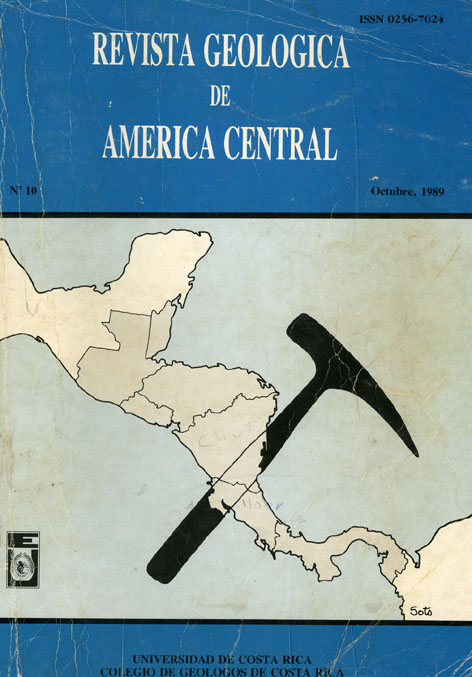Abstract
Recent geological mapping in the Osa Peninsula and micropaleontological studies have led to the recognition of a new lithostratigraphic unit- the Osa Group. This group replaces the Charco Azul and the Armuelles Formation in the Osa Peninsula as shown on the DGMP 1:200,000 geological map, and includes tje informally defined Punta La Chancha formation. It is defined as a sequenceof semi-consolidated to lithified, greenish-grey, graded, graywacke-type conglomerates, sandstones, siltstones and claystones of Mid to Upper Pliocene age lying unconformably on a Nicoya Complex basement, and unconformably overlain by unconsolidated Quaternary sediments of the Puerto Jiménez Group. The Osa Group was deposited in a wide variety of sedimentary enviroments ranging from fresh-water fluviatile; brackish lagoonal-estuarine-deltaic; shallow shelf down to deep marine basin. Economically important placer gold is widespread and tendsto be concentrated locally in the conglomeratic members, especially at the basal unconformity. It is suggested that the Osa Group sediments were deposited in intermittently subsiding pull-apart basins governed by wrench faulting in a geological setting similar to that on and around the Osa Peninsula at present. The present-day Panamá- Coiba Fracture Zone in the Gulf of Panamá can be extrapolated northwarsd via three submarine canyons on the continental slope, and thence into a system of braided northwest-trending transcurrent faults parallel to Costa Rica's Pacific coastline. The landforms and bathymetry of the region surrounding the Osa Peninsula are considered to be largely controlled by (intermittent) dextral strike-slip movement on the main fractures. Within this tectonic setting the Golfo Dulce basin and the Coto Colorado-Chiriquí lowlands form pull-apart or tipped-wedge basins, whereas the Osa and the Burica Peninsula, and the offshore Coiba Ridge, are tilted horst blocks.##plugins.facebook.comentarios##
Downloads
Download data is not yet available.






